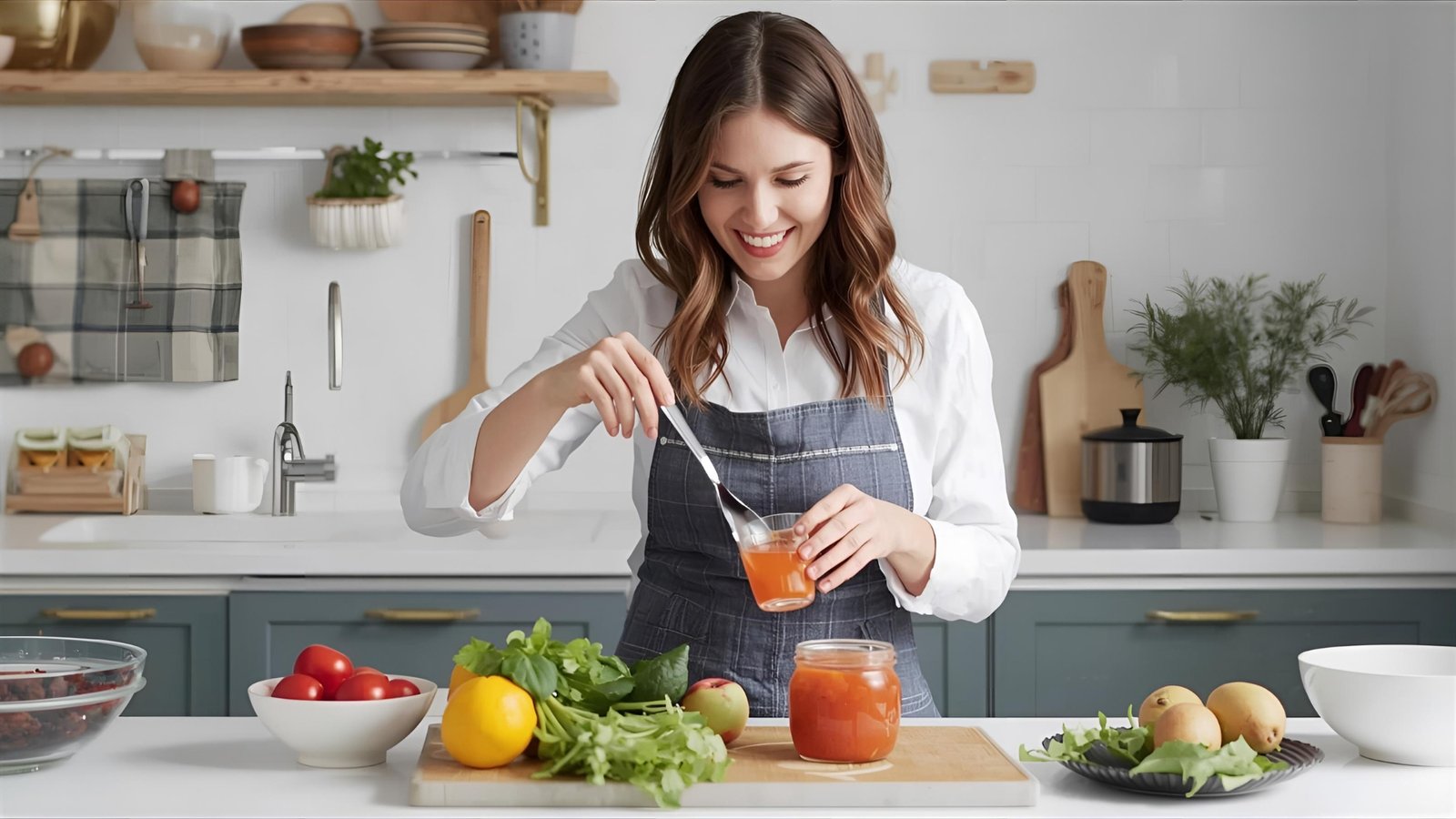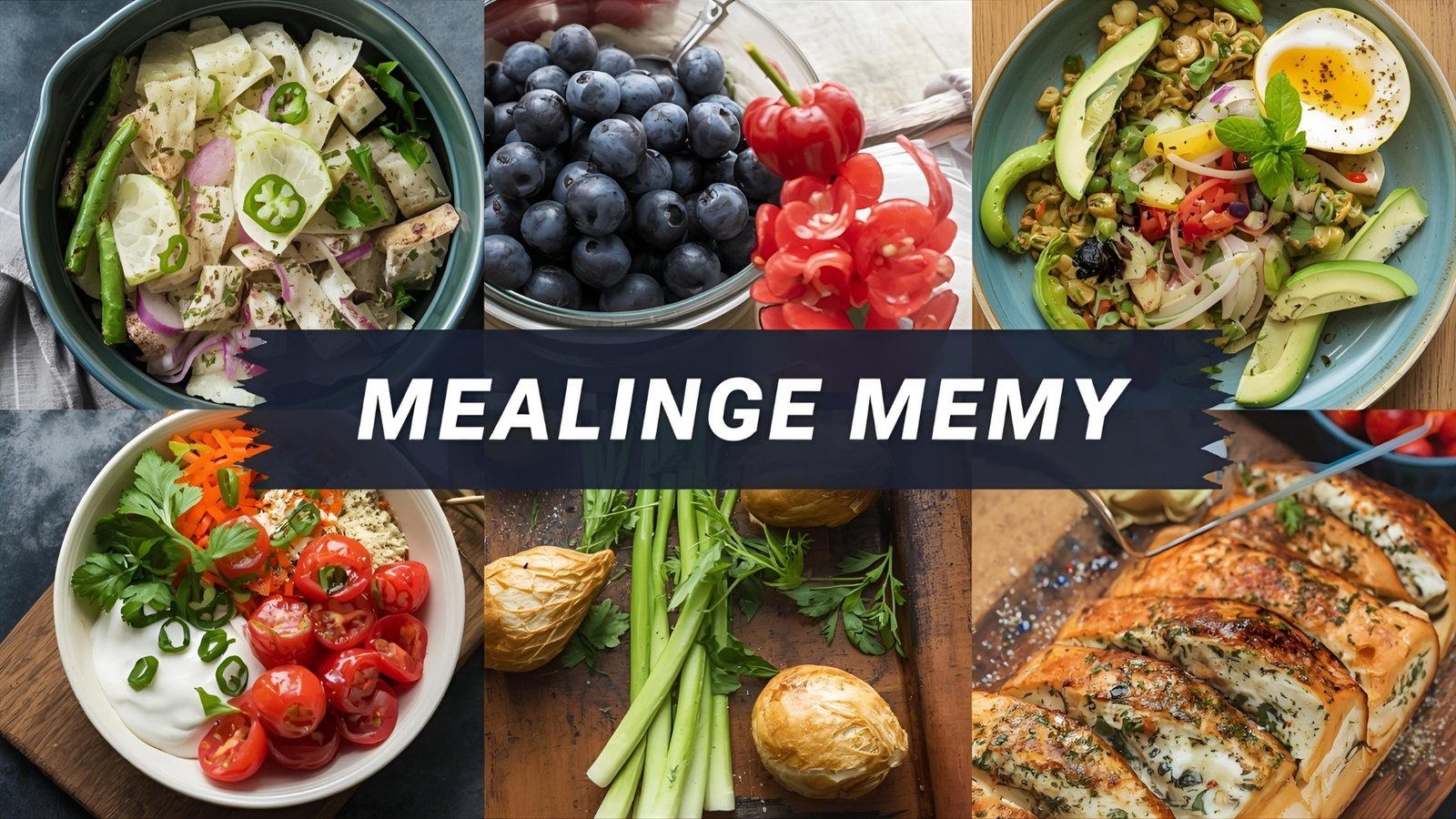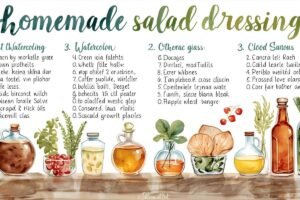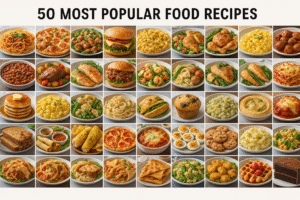When headlines warn about a Listeria outbreak, the first reaction is often confusion about what to eat and what to avoid. Listeria monocytogenes is a hardy bacterium that can survive and even multiply in cold environments, making everyday foods like deli meats, soft cheeses, and ready-to-eat salads potential risks if they’re contaminated. The good news is that you don’t need an extreme diet overhaul to stay safe. Thoughtful choices, a few strategic substitutions, and consistent kitchen habits can significantly reduce your risk of infection while maintaining meals that are both satisfying and nutritious. In this guide, you’ll learn how to make simple food swaps, understand where the highest risks lurk, and maintain peace of mind when a Listeria outbreak is in the news.
Listeria and why outbreaks matter
Listeria monocytogenes differs from many other pathogens in that it can tolerate refrigeration and grow slowly at low temperatures. That trait, combined with the popularity of ready-to-eat items, increases the likelihood that a contaminated product will be eaten without a kill step, such as cooking. While anyone can get sick, certain groups face a much higher risk of severe illness, including pregnant people, adults over 65, and those with weakened immune systems. Symptoms vary from mild gastrointestinal upset to invasive listeriosis, which can be serious. During a Listeria outbreak, public health agencies issue recall notices and brand-specific warnings; however, consumers still benefit from making risk-aware shopping and cooking decisions every day.
How food swaps reduce risk without sacrificing flavor
A food swap works by replacing a higher-risk item with a similar, lower-risk alternative that either undergoes a kill step or is less prone to contamination. For example, reheating deli meat until it is steaming hot significantly reduces the bacterial load compared with eating it cold. Choosing pasteurized dairy over unpasteurized versions offers the familiar creamy taste with added safety. These minor adjustments add up, especially when you routinely eat foods commonly implicated in recalls.
The psychology of safer choices
It’s easier to choose safer foods when the substitute feels familiar. If you love brie on crackers, a pasteurized soft-ripened cheese offers a comparable experience. If cold turkey sandwiches are your go-to lunch, a freshly cooked chicken breast sliced at home mimics the texture and flavor of deli meat without the same risk profile. Thinking in terms of “swap, not stop” prevents a sense of deprivation and keeps your plan realistic.
Smart swaps for high-risk categories
Delis meats and ready-to-eat proteins
Cold deli meats, pâtés, and refrigerated smoked fish are classic examples of higher-risk items because they are consumed without additional cooking and stored in chill cases where cold chain breaches can occur. During a Listeria outbreak, switching to freshly cooked proteins is a safer route. Roast a batch of chicken thighs or turkey breast on the weekend, then chill promptly and slice as needed. If you prefer deli meat, heat it until it’s steaming hot before layering it into a sandwich, then let it cool briefly to a pleasant temperature. For a seafood fix, choose canned tuna or salmon, which have been heat-processed, or opt for hot-smoked fish served warm.
Soft cheeses and unpasteurized dairy
Soft cheeses made from raw milk can carry a higher risk, especially varieties like brie, camembert, queso fresco, and blue cheeses, unless clearly labeled as pasteurized. The swap is straightforward: choose pasteurized soft cheeses or reach for semi-soft options like pasteurized Gouda or Havarti. For spreads, whipped ricotta, pasteurized cream cheese, and cottage cheese deliver creaminess for bagels, dips, and desserts with a lower risk. If you enjoy Mexican-style cheeses, look for brands that explicitly state “made with pasteurized milk” on the label.
Pre-packaged salads and cut produce
Bagged salads, pre-cut fruit cups, and ready-made deli salads may be convenient, but can pose extra risk because cutting surfaces and packing lines are potential contamination points. During an outbreak, swap pre-made salads with whole heads of lettuce and uncut produce you wash and prep at home. Assemble salads right before eating and keep dressings separate to maintain freshness. For fruit, buy whole melons, wash the rind thoroughly under running water, and use a clean knife and cutting board to avoid cross-contamination. If you need grab-and-go convenience, choose intact fruit, such as apples, bananas, or oranges, that you can peel yourself.
Refrigerated smoked seafood
Refrigerated smoked salmon and trout delivered cold on bagels or charcuterie boards are delicious but belong on the higher-risk list for vulnerable groups. Safer swaps include hot-smoked fish served warm, canned salmon mixed with herbs and lemon, or freshly cooked fillets flaked over toast. If a recipe calls for the flavor of smoked salmon, try a quick skillet cure: sear fresh salmon with a dash of smoked paprika and sea salt, then chill and slice for a savory accent that sidesteps the risk profile of refrigerated smoked products.
Deli-counter specialties and cold leftovers
Deli-counter items, such as cold rotisserie chicken slices, cooked grains, and prepared cold pastas, can spend extended time in the temperature “danger zone” during service. When a Listeria Outbreak Smart Food is top of mind, consider swapping these items with home-cooked equivalents, portioned and cooled promptly. Reheat leftovers thoroughly until piping hot before eating, and aim to consume them within a couple of days. For sandwiches, layer freshly cooked, piping-hot fillings and enjoy them warm rather than chilled.
Kitchen practices that amplify your food swap strategy

Temperature control and the power of the kill step
Cooking to safe internal temperatures remains the most reliable way to reduce harmful bacteria. A small digital thermometer is your ally for poultry, ground meats, and seafood. After cooking, cool foods quickly by portioning them into shallow containers and placing them in the refrigerator within two hours, or within one hour if the room is hot. Listeria can grow at refrigerator temperatures, so your goal is to minimize the time food spends in the danger zone and to eat cooked items on a reasonable timeline.
Refrigerator hygiene and organization
A clean, cold refrigerator may be bare, but it has a surprisingly profound impact. Keep the temperature at or below 40°F (4°C) and the freezer at 0°F (-18°C)—store ready-to-eat foods on upper shelves and raw meats on lower shelves in leak-proof containers to prevent drips. Wipe spills promptly, especially from raw juices or brine, and schedule a weekly inventory to use up older items. During a Listeria outbreak, this habit ensures that if a recall affects something you’ve purchased, it’s easy to locate and discard.
Cross-contamination control
Dedicated cutting boards for raw proteins and produce help maintain clear boundaries between raw and cooked foods. Wash your hands, knives, and boards with hot, soapy water after handling raw meat or poultry. When rinsing produce, use cool running water rather than soap or bleach, and dry with a clean towel to reduce surface moisture where bacteria can cling. Keep refrigerator handles, sink faucets, and countertop appliances, such as slicers and mandolines, clean; these touchpoints can harbor bacteria if not properly sanitized.
Shopping strategies when a Listeria outbreak is in the news
Read labels with intention
Look for phrases like “pasteurized milk”, “heat-treated”, and “ready-to-cook” versus “ready-to-eat.” If a product category is often linked to outbreaks, scrutinize its storage instructions and best-by dates. A shorter shelf life can sometimes signal fewer preservatives, which is appealing, but it also means you should plan to eat it sooner and store it in a colder location.
Favor whole and intact foods
Whole vegetables, heads of lettuce, and intact fruits are generally considered to be of lower risk than pre-cut items that have been processed with knives and packing lines. Likewise, whole blocks of pasteurized cheese that you slice at home have fewer surfaces than pre-sliced versions. If time is tight, consider home-assembly kits: buy washed but uncut greens, a rotisserie chicken that you’ll reheat thoroughly, and pantry-stable dressings that you can portion right before eating.
Choose vendors with transparent safety practices
Many grocery stores publish food safety standards and recall procedures online or in-store. Favor delis and seafood counters that maintain clean displays, use digital thermometers, and visibly rotate stock. If your store offers made-to-order sandwiches, request that meats be heated until steaming and that knives and boards be cleaned between orders. Transparency is a trust signal; during a Listeria outbreak, it helps you make confident choices.
Meal ideas that apply the swaps

A safer take on classic lunch favorites
Swap a cold ham and brie baguette for a warm turkey and pasteurized Havarti panini. Roast a turkey breast on Sunday, slice it after it has chilled, then reheat the slices in a skillet until they are hot before pressing the sandwich. Layer in spinach and whole-grain mustard for brightness. This approach preserves the indulgent feel while adding a kill step right before you eat.
Comfort bowls with heat and freshness
Build a bowl with hot brown rice, sautéed vegetables, and freshly cooked salmon or tofu. Dress with lemon-tahini and chopped herbs. Because every component is cooked, washed, and prepared right before serving, the bowl aligns with safer handling practices. Leftovers should be reheated thoroughly or enjoyed within a day while still fresh.
Brunch with thoughtful dairy choices
Create a brunch board focused on pasteurized cheeses, nuts, roasted vegetables, and warm whole-grain toast. Add a quick scrambled egg or shakshuka for a protein anchor served hot. If you miss the silky note of brie, a pasteurized double-cream cheese spread delivers a similar richness with a safer profile.
Special considerations for higher-risk individuals
Pregnant people, older adults, and immunocompromised individuals face higher odds of severe illness from foodborne pathogens. During a Listeria outbreak, they may wish to avoid refrigerated smoked seafood, soft unpasteurized cheeses, deli meats eaten cold, and pre-made deli salads entirely. Heating meats until steaming, choosing pasteurized dairy, and preparing salads at home with freshly washed produce are practical safeguards. Reading recall notices carefully and erring on the side of caution for ambiguous labels further reduces risk. For caregivers and family members, supporting these choices by stocking safer staples and labeling leftovers can make a meaningful difference.
What to do if you suspect contamination at home
If you discover that a product in your refrigerator has been recalled for Listeria, do not taste it to check. Seal it in a bag, discard it, and sanitize any surfaces it touched, including shelves, bins, knives, and cutting boards. Wash your hands with warm, soapy water after handling the item and the trash. If you or someone in your household develops symptoms such as fever, muscle aches, nausea, or diarrhea—especially if pregnant or immunocompromised—seek medical advice promptly and mention the potential exposure. Early attention is always better than uncertainty.
layered protection through habits and swaps
Food safety isn’t about fear; it’s about layers of protection that become second nature. Swapping higher-risk items for safer alternatives, cooking and reheating strategically, organizing your refrigerator, and shopping with awareness all work together to reduce your risk during a Listeria outbreak without forcing you to abandon your favorite flavors. As you incorporate these habits, you’ll find that eating well and staying safe can coexist comfortably.
Building a routine that sticks
Habits stick when they are easy, visible, and rewarding. Keep a small thermometer near the stove, store sanitizing spray under the sink for quick wipe-downs, and set your fridge to a reliable 38–40°F range. Prepare a short list of your preferred pasteurized cheeses, whole produce picks, and reheatable proteins so grocery trips are quick. Over time, these small steps become automatic, giving you peace of mind long after the headlines fade.
Conclusion
A Listeria outbreak doesn’t have to upend your kitchen. By choosing pasteurized dairy, reheating deli meats until steaming, favoring whole produce over pre-cut packs, and organizing your refrigerator for safety, you create a practical, sustainable defense against contamination. These simple food swaps preserve the joy of eating while minimizing risk, especially for vulnerable family members. With a bit of planning and a few smart substitutions, you can keep your menu vibrant, your routines simple, and your household safer from listeriosis.
FAQs
Q: Which foods should I prioritize swapping during a Listeria outbreak?
Focus on cold deli meats, unpasteurized soft cheeses, refrigerated smoked seafood, and pre-made deli salads. Swap them for reheated deli meats served hot, pasteurized soft cheeses, hot-smoked or canned fish, and salads you assemble at home from washed whole produce.
Q: Is it safe to eat deli meat if I heat it first?
Yes, reheating deli meat until it’s steaming hot adds a crucial kill step that reduces the risk of bacterial contamination. Eat it promptly after heating, and refrigerate leftovers quickly in shallow containers.
Q: Are all soft cheeses risky?
Soft cheeses are safer when made from pasteurized milk. Always check labels. If a cheese is unpasteurized or the label is unclear, opt for a pasteurized alternative or a semi-soft option that you can slice yourself.
Q: Can Listeria grow in the refrigerator?
Listeria can survive and slowly grow at refrigerator temperatures, which is why proper organization, quick chilling, and timely consumption are crucial. Keep your fridge at or below 40°F (4°C) and clean spills promptly to limit cross-contamination.
Q: What’s the safest strategy for pre-cut fruits and salads?
During an outbreak, favor whole, intact produce that you wash and prepare just before eating. When convenience is essential, choose items with the shortest preparation time, keep them cold, and consume them promptly after purchase.
See More: 15-Minute Easy Asian Food Recipes That Taste Like Takeout (But Cost Half the Price)








